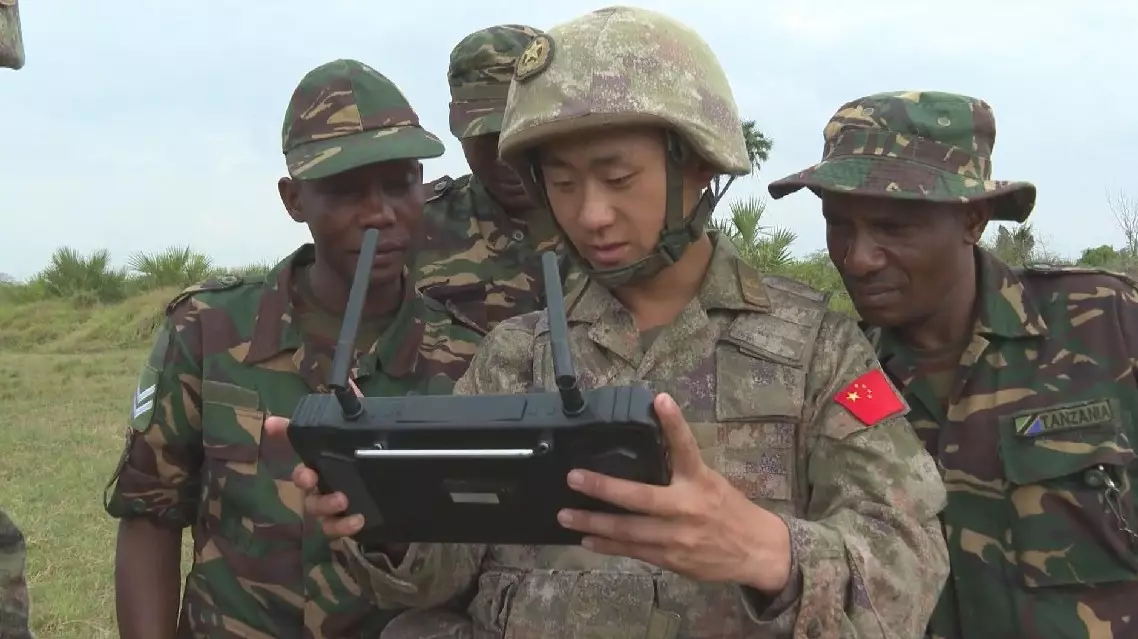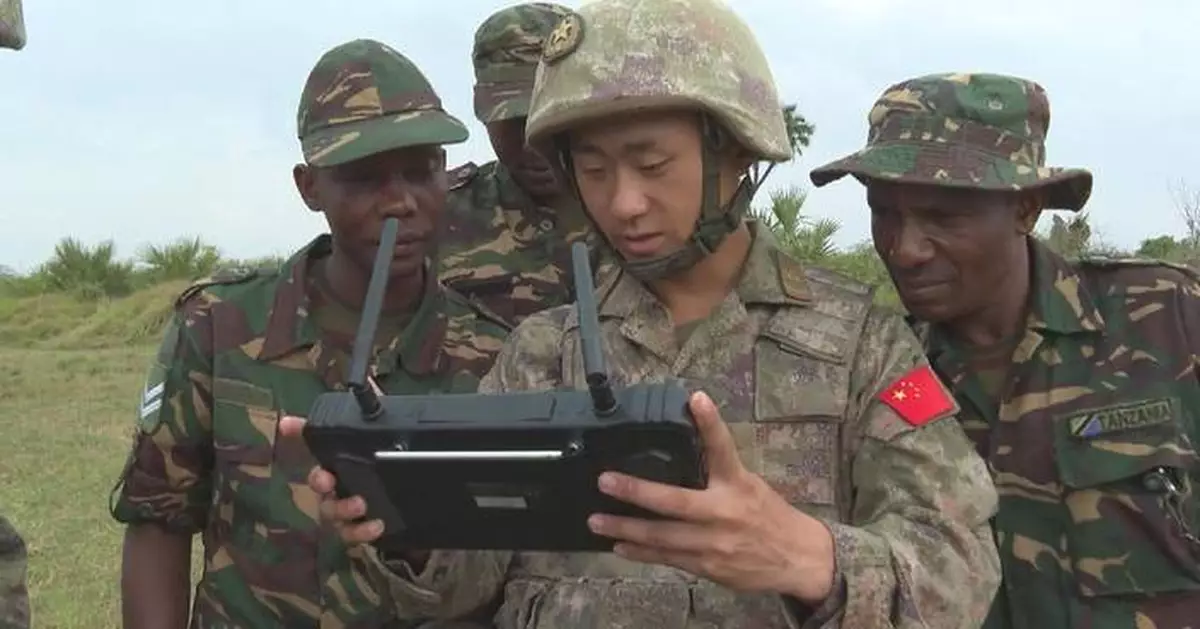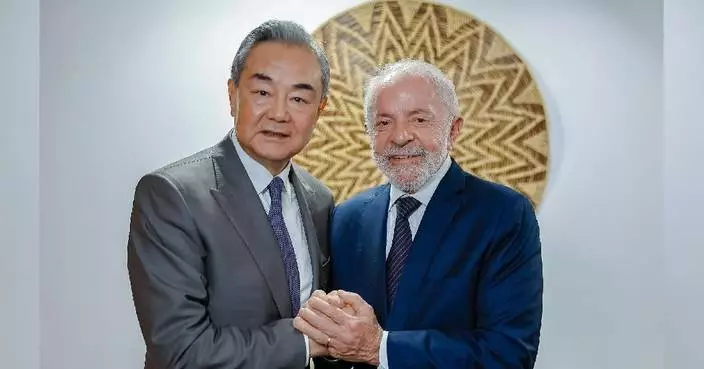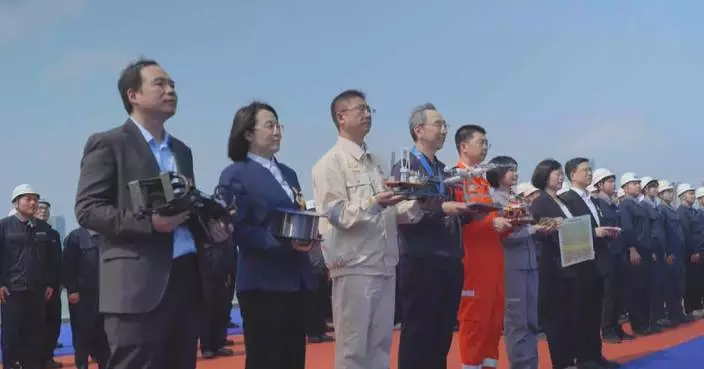Chinese and Tanzanian troops conducted joint anti-terrorism operations on land from Friday to Monday.
This was part of the "Peace Unity - 2024" joint military drills of China, Tanzania and Mozambique, which focused on scenario analysis, battle planning and coordinated operations to test the joint planning capabilities of the participating forces.
Elite forces from China and Tanzania formed a joint directorate to guide participating troops in combat command and operational exercises based on simulated scenarios.
At the initial stage, the exercise meticulously aligned the joint directorate, joint command and combat troops to carry out tabletop exercises and adaptive training.
"On the basis of fully communicating with our Tanzanian counterparts at the initial stage, we crafted exercise scenarios and conditional trend of operations. Throughout the exercise, we flexibly combined planned deployment with ad hoc command to guide the troops in enhancing joint command capabilities and coordination of actions so as to ensure the effect of the exercise," said Zhou Wei, an officer of the Chinese troops participating in the drill.
China and Tanzania selected a total of 20 officers to form the joint command center, comprising six sections for intelligence and reconnaissance, operational planning and operation control.
In their training, Chinese and Tanzanian forces enhanced exchanges and conducted detailed discussions on command information transmission, organization of tactical telecommunications and construction and employment of digital elements such as mapping, navigation, meteorological and hydrological data.
"We emphasize strengthening exchanges with our Tanzanian counterparts in comparable operations and actively pursue innovative approaches, methods and models to ensure joint information security in unfamiliar overseas territories and complex battlefields. These days, we have further enhanced our two armies' capabilities to guarantee information security in diversified operations through mutual learning," said Wang Guofeng, another officer of the Chinese troops.
Running from late July to mid-August, and focusing on joint counter-terrorism military operations, the "Peace Unity - 2024" joint military drill is being conducted both on land and at sea. The joint exercise aims to enhance the capabilities of the participating troops in joint counter-terrorism operations and to deepen military mutual trust and practical cooperation.

Joint China-Tanzania military exercise enhances operation planning
U.S. tariffs on Cambodia, which were set at 49 percent, have sparked concerns among the Southeast Asian country's key export industries such as garment manufacturing amid the ensuing economic uncertainties.
On April 2, U.S. President Donald Trump announced the 49 percent "reciprocal tariff" on goods imported from Cambodia, the highest among all countries. Days later, the U.S. reduced the so-called "reciprocal tariff" to 10 percent for 90 days, offering a window period to Cambodia for negotiations with it.
Cambodian businesspeople say the tariffs have the potential to wreak havoc on the country's manufacturing sector, which, according to data from the World Bank, makes up around a fifth of the country's GDP.
"For U.S. manufacturers, definitely, there will be a big impact. If manufacturers are focusing on U.S. products, they are now in the middle. They don't know what they should do at the moment because the tariff now from Cambodia to the U.S. is actually quite high," said Dr. Ben Li, a Hong Kong investor in Cambodia and Chairman of the Cambodia Chinese Commerce Association.
Nevertheless, Li sees the tariff hike as an opportunity to export more Cambodian goods to the European Union, where a majority of Cambodian exports enjoy duty-free status.
"I always say there will be a light (at the end of the tunnel.) Even now, the U.S. tariff is so high, it's going to be so high after 90 days, we don't know. But, there's still a big market to Japan or to the European Union. There's still a big opportunity there," he said.
The Cambodian investor also believes the development of major infrastructure projects will help support Cambodia's economy.
"Especially the new canal and then the new airport, and the railways which connect to China. I believe once the logistics and infrastructure are built up, it can help the whole country's economy. By reducing the transportation costs, it can also mitigate the tariff costs," he said.
Cambodia and the U.S. held their first tariff negotiations on April 16, with more expected to follow. Local experts said the stakes are high for the country's workers.
"If this negotiation fails, there will be a significant impact. It will include the garment and travel goods sector. These sectors consist of about 1,068 factories and 930,000 workers. The income generated from these sectors is about 3 billion dollars per year. So it would significantly impact Cambodia's economy, jobs and incomes," said Chey Tech, a socio-economic research and development consultant from Dynamic Alliance Consulting.
Despite the potential risks, Tech expressed his optimism about a positive outcome, citing Cambodian Prime Minister Hun Manat's letter to Trump on April 4.
"The Prime Minister's letter confirmed that Cambodia would reduce the tariff rate for U.S. goods to 5 percent. Second, Cambodia is the least developed country. Third, Cambodia produces goods that the developed countries won't produce. We asked whether the U.S. would be able to produce these low-cost products. It cannot," said Tech.
In 2024, Cambodia exported goods of 9.9 billion dollars to the U.S., making it the country's largest market, accounting for 37 percent of Cambodia's total exports.

49-percent US tariffs sparks worry among Cambodia's key export industries




















































